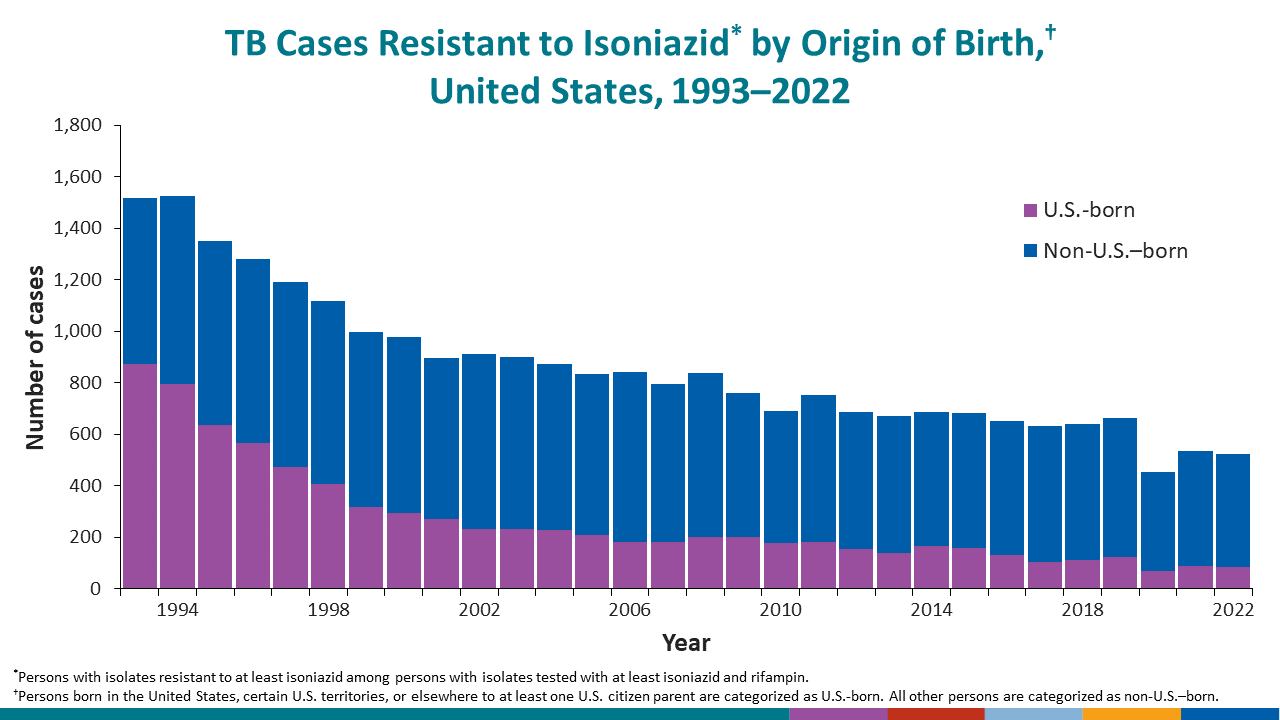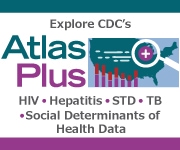Reported Tuberculosis in the United States, 2022
Drug-Resistant TB

Resistance to anti-TB drugs is a concern in the United States and globally.
- Resistance to isoniazid, one of the most common anti-TB drugs, can be a precursor to multidrug-resistant (MDR) TB disease, which is caused by an organism that is resistant to at least isoniazid and rifampin.
- Pre-extensively drug-resistant TB (pre-XDR TB) disease is caused by an organism that is resistant to isoniazid, rifampin, and a fluoroquinolone OR by an organism that is resistant to isoniazid, rifampin, and a second-line injectable (i.e., amikacin, capreomycin, and kanamycin).
- Extensively drug-resistant TB (XDR TB) disease is caused by an organism that is resistant to isoniazid, rifampin, a fluroquinolone, and a second-line injectable (i.e., amikacin, capreomycin, and kanamycin) OR by an organism that is resistant to isoniazid, rifampin, a fluoroquinolone, and bedaquiline or linezolid.
During 2022, resistance to at least isoniazid at initial diagnosis was reported for 528 (8.4%) cases in the United States, including 90 (1.4%) MDR cases.
- Among U.S.-born persons, 86 (5.7%) cases were INH-resistant TB, including 11 (0.7%) cases of MDR TB.
- Among non-U.S.–born persons, 439 (9.3%) cases were INH-resistant TB, including 77 (1.6%) cases of MDR TB.
Pre-XDR and XDR TB continue to be rare in the United States, with 16 cases of pre-XDR TB and five cases of XDR TB reported in 2022. Stringent guidelines for TB treatment in the United States, including diligent follow-up efforts by public health personnel, greatly reduce the risk of developing drug-resistant TB.
Learn more in the Executive Commentary.

